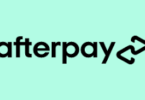Looking for a fun, profitable business idea? Starting a bounce house rental business can be an excellent opportunity.
You can launch a lucrative party rental venture from home with minimal startup costs and overhead.
Bounce houses, also called jumpers or bouncers, provide hours of entertainment for kids.
They are a must-have attraction at children’s birthday parties, school events, and backyard celebrations. As demand grows, so does the need for bounce house rentals.
This article will highlight key steps to start a bounce house rental business. With the right planning and promotion, you can bring bouncing big profits.
How to Start a Bounce House Rental Business
Follow this step-by-step guide to learn how to start your own bounce house rental business:
Step 1: Write a Business Plan
Like any new business venture, crafting a detailed business plan is the first step. This will serve as your roadmap to success.
Important elements to cover include:
- Company structure and ownership
- Startup cost estimates
- Anticipated overhead and operating expenses
- Equipment needs and inventory goals
- Target customer demographics
- Ideal pricing and packages
- Marketing tactics for growth
- Revenue and profitability forecasts
- Milestones and timeline
Thoroughly planning these key aspects will help guide wise business decisions as you start and expand operations.
Step 2: Obtain Necessary Permits and Licensing
Register your bounce house rental business and obtain all required licenses and permits.
Requirements vary by state and municipality but may include:
- Business license
- Sales tax permit
- Use/zoning permits
- Liability insurance
- Food handling permits if serving concessions
Contact your local government office to learn about specific regulations and costs for renting party equipment in your area. Stay compliant by keeping licenses current.
Step 3: Research Bounce House Options and Safety Standards
It’s smart to offer customers different types of bounce houses to meet various needs and budgets:
- Small units for toddlers
- Jumbo houses for older kids
- Themed designs like princess castles or pirate ships
- Obstacle courses and slide combos
- Sports themes like basketball hoops
All rental equipment should meet ASTM International safety standards. Units should have padded poles, mesh walls for visibility, secured entrances/exits, and drainage holes.
These features minimize risks and accidents. Consumer education on safety is also critical.
Step 4: Invest in Quality Bounce Houses
Bounce houses represent significant upfront equipment investments for your business.
Focus on durability, safety, ease of transport, and storage.
- Purchase commercial-grade units designed for heavy use, not cheap residential inflatables.
- Select bright colors and exciting themes that appeal to kids.
- Buy units that quickly inflate/deflate with included blowers.
- Choose lightweight bounce houses that are easier to transport and set up.
- Invest in protective carrying cases for storage and travel.
Start small with 1-3 premium bounce houses. Expand inventory as demand and profits grow.
Step 5: Equip Your Delivery Vehicle
You’ll need a suitable vehicle to transport bounce houses to and from events safely.
Used full-size cargo or passenger vans are a popular choice.
Look for:
- Reliable operating condition
- Rear and side doors for easy loading
- Towing package to move multiple units
- Interior racks, straps, and blankets to secure houses.
- Vinyl decals or magnetic signs for branding.
Proper tie-downs, padding, and restraints prevent damage during transport and delivery.
Step 6: Create a Mobile Generator Solution
Bounce houses require substantial electricity to run blowers and air pumps continuously.
Portable generators are essential to power equipment at any location.
Invest in:
- A quiet, fuel-efficient generator with ample power output
- Heavy-duty extension cords and power strips
- A hand truck or dolly to move the generator easily
- Protective case to minimize noise
Educate clients on generator placement to keep air intakes safely distanced from houses. Refuel before each rental.
Step 7: Obtain Event Liability Insurance
Liability insurance is mandatory to protect your business in the event of an accident or injury.
General policies often exclude inflatables – ensure you obtain coverage specific to party rental operations. Work with an insurance provider experienced with event companies.
Expect to pay yearly premiums of $2,000-$5,000 for adequate bounce house coverage limits.
Require all clients to sign liability waivers before rentals.
Step 8: Create a Website and Marketing Materials
A professional website with photos of your inventory is crucial for looking legit.
Allow online browsing and bookings to provide 24/7 customer convenience.
Also, produce quality marketing materials like flyers, business cards, and branded giveaway items.
Attend local fairs and events to raise awareness of your new rental offerings. Leverage social media for affordable, effective promotion.
Share lively photos and videos of bounce houses in action to attract bookings.
Step 9: Set Competitive Rental Rates
Research competitor bounce house rental rates in your region. Average pricing is often $100-$250 per full day. You can also charge by the hour for smaller events.
Consider offering package deals like unlimited bounce house rentals for a child’s birthday party. Discounts for multi-day rentals or off-peak bookings are other options.
Avoid setting prices too low. You want to earn ample margins after costs of equipment, transport, labor, insurance, etc. Price competitively but profitably.
Step 10: Develop Client Contracts and Procedures
Solid client contracts and protocols will protect both parties and ensure smooth events.
Important areas to address include:
- Rental fees, deposits, and payment terms
- Delivery/setup and takedown timing
- Client liability and waiver of claims
- Safety rules and capacity limits
- Cancellation and refund policies
- Weather and terrain requirements
- Cleaning and damage clauses
- Generator usage and electric needs
Also, provide instruction sheets explaining proper bounce house operation and safety.
Read Also: Oxfam Jobs and Recruitment | Apply Now
Step 11: Focus on Providing Great Service
Your bounce house business will thrive or fail based on service reputation. Wow clients by:
- Arriving early to allow full setup and inspection
- Providing friendly, patient customer service
- Handling any issues promptly and professionally
- Ensuring houses are clean before delivery
- Securing units properly to prevent injuries
- Supplying all needed items like stakes, tarps, tape, etc.
- Making the rental process easy and stress-free!
Exceeding expectations will drive referrals and repeat rentals.
Step 12: Consider Expanding Your Rental Offerings
Once established, you can grow by expanding beyond bounce house rentals:
- Water slides and dunk tanks
- Concession machines like cotton candy or snow cone makers
- Tents, tables, chairs, linens
- Party entertainment like clowns or characters
- Photo booths, games, decorations
- Portable restrooms and handwashing stations
Become a one-stop shop for parties and events!
Conclusion
Following these steps and executing strategically can turn bounce house rentals into a full-time business or lucrative side hustle.
Bring joy to kids’ parties and gatherings with safe, fun inflatables. See your bookings and profits soar!






